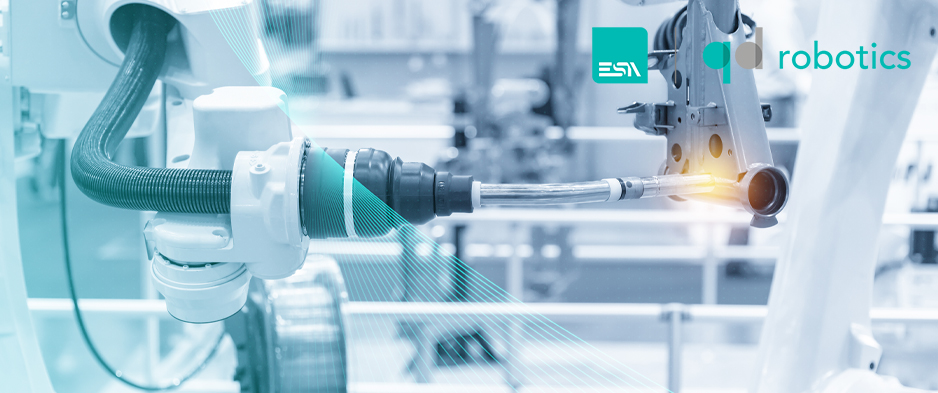ESA S.p.A., specialized in the development of hardware and software solutions that allow exploiting the potential offered by data to make production more sustainable, efficient, safe and digitized, is now focusing on robotics. Through an extraordinary management operation, the company based in Mariano Comense (CO) has in fact invested in QDesign S.r.l. whose QD Robotics brand is well established on the market. This operation fostered the creation of the ESA Robotics division.
The know-how of QD Robotics
Based in Vicopisano (PI), QDesign S.r.l. employs about 20 people and is a dynamic company specialized in the development of advanced robotic technologies for machining and finishing different materials. The company boasts specific know-how in the development of design software for robotics, thanks to which it is possible to virtually generate and simulate a work program for the robot starting from a tool path generated by any CAM system. The tool that allows compensating for the inaccuracies typical of large castings is another crown jewel of the company. As for hardware, QD Robotics solutions for robotic milling allow performing roughing and finishing operations; other products instead are able to compensate for deformations and carry out water-jet cutting.
The birth of ESA Robotics
After the acquisitions of Elcon from Pontedera, specialized in numerical control technologies, and of Selema from Bentivoglio, which produces motors and drives, this operation marks the birth of the ESA Robotics division, which will develop highly integrated robotic cells, according to an innovative approach that focuses on performance, flexibility and ease of use.
“The new ESA Robotics division will offer the customer the strengths that have guaranteed the success of ESA’s range for over forty years, which translate into solutions created with expertise and attention to detail”, says Cesare Colombo, Chief Marketing Officer of ESA S.p.A. “Thanks to this acquisition, we will be able to develop robotic cells made entirely using ESA technologies”, points out Ivan Parisi, Robotics Division Manager.
Custom robotic cells
From a technological perspective, the robotic cells will be characterised by the integration of hardware-software solutions deriving from the acquisition of the other enabling technologies already offered by the company: from automation to motion control, from IoT to simulation, to cyber security.
ESA Robotics will create work cells able to handle the finishing of components made of metal, stone, composite materials or wood, even large ones.
In addition to milling work, the cells will also carry out laser tools operations, such as cutting or surface treatments for Automotive applications.
Unlike machining centres, which offer limited workspace, these cells use robots as an “arm” for moving the tool, with great advantages in terms of flexibility. For example, by mounting the robot on a linear guide unit, ESA Automation was able to finish a 25 metre-long wind turbine blade.
ESA Robotics will have a catalogue of robotic cells; nevertheless, in line with the customer-oriented company philosophy, it will also allow the creation of customised solutions.

